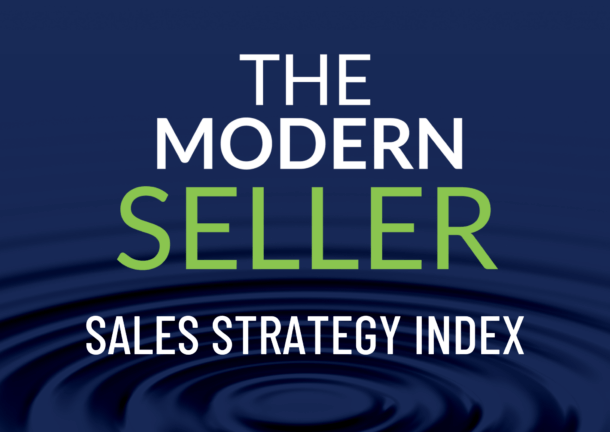In sales, sometimes you need to slow down to speed up. This article emphasizes the importance of intentional friction in sales, urging CEOs, sales leaders, and sales professionals to slow down in five key sales planning areas: hiring, territory planning, compensation planning, major sales strategy changes, and pursuing major opportunities. As a result, you’ll improve sales results.
********
Intentional Friction in Sales
These sales tips applies to CEOs, sales leaders, and sales professionals. You’re moving way too fast on the important things and not fast enough on things of little material consequence to the organization. Maybe most importantly, your teams and customers are watching this and operating within it. How you (and your customers) operate becomes your sales culture. Your sales culture is what creates your short and long-term results.
A new Wall Street Journal article shares that the best leaders don’t create entirely “frictionless organizations.” I like to think of this as “intentional friction,” the kind that gets us to slow down or stop, to allow ourselves to think deeply before acting tactically.
5 Sales Planning Areas to Slow Down When Pressure is Up
In applying this to sales growth, let’s look at 5 key sales planning areas where it pays to pause, especially when the pressure to make a move is ratcheted up all around you (or in your own mind). These ideas will help you improve your sales growth while reducing your risk of unintended consequences.
1. Hiring sales leaders or sales professionals.
You’ll never hear anyone, anywhere say, “Hiring is so easy. We get it right every time. The best candidates just appear when we post an ad.” Many times, I hear from sales leaders about the immense pressure to hire the candidate right in front of them. It’s a fear-based decision, usually full of bias. Fear of missing out, fear that the candidate might ghost them or take a different offer.
Outside of structural elements (sales strategy, compensation planning, or territory planning), hiring is the most material task you have as a leader. Your sales team will make or break your sales culture, your growth, and your organization. One bad hire will cost your firm over $100,000, and that doesn’t even touch how it can impact your morale or your customers.
Develop a hiring strategy like you would a sales strategy. Use a multi-pronged interview approach, leverage a sales candidate assessment, and leverage scorecards. Most of all, don’t give into the voice in your head that says you have to hire this person today. If they’re the right fit, they will respect and appreciate a methodical and well-thought-out approach.
2. Territory planning.
Territory planning encompasses any number of segmentation categories, but a few of the common ones include geography, outside and inside sales team coverage, industry or customer segmentation, national accounts planning, and product line segmentation.
Outside of sales strategy, territory planning is the backbone of the sales organization. It’s connected to many other facets of the business and its importance sometimes gets overlooked. Territory planning connects to hiring strategy and the skills required, how compensation plans are created and adjusted, how your customers are impacted, and how your sales teams operate.
3. Compensation planning.
Compensation plans are unique to every organization. Good ones have some common threads: creating a motivating environment for the seller, generating the right type of growth for your organization, offering accountability and transparency. Many compensation plans tend to weigh heavily on base, and without enough incentives to motivate a seller to sell.
If you take a team of 10, a typical result is 6 sellers hitting between 65%-80% of their number because their base is too heavy, and their sellers aren’t motivated. Two sellers will hit at or above quota, because they are rockstars who will do that anyway. Two sellers will be under 60%. The sellers who hit their quota will never make up for the ones who miss repeatedly, and the ones who miss repeatedly likely aren’t covering their costs of being in the organization. Another unwelcome side effect? Leaders are often chasing after underperformers instead of coaching up their A and B players.
Sometimes you need to pause in sales. “Intentional friction,” the kind that gets us to slow down or stop, allows you to think deeply before acting tactically.
4. Major sales strategy changes.
Sales strategy requires a balance in speed. I write about “strategic speed” in The Modern Seller; it’s a phrase I first came across coined by Forum Corporation. Their research uncovered that over 90% of organizations lacked the ability to move major initiatives forward because of the challenge in balancing long-term results with short-term desires.
In applying this to sales strategy, there’s a balance between allowing a strategy to unfold over time and deciding to pivot because it’s not working. When I’m helping a client design sales strategy, we typically account for the next two years. Decision-making beyond that timeframe can begin to feel like guesswork. There are usually a few places where strategy fails – implementation, leadership support, accountability, prioritization, and lack of supporting structures. As you’re analyzing your current sales strategy or designing a sales strategy, those four areas will help you to filter your decision-making processes.
5. Major sales opportunities and pursuits.
Pursuing bad opportunities is costly. Even though that makes a lot of logical sense, many sellers still pursue a significant number of deals that will never close. Many sales leaders require sellers to participate in major pursuits that have very low odds of winning. (Sometimes there is a good strategic reason to do that, but many times it’s because that is simply the expectation and what has been done in the past.)
When deals aren’t ruthlessly qualified in the beginning stages, pipelines aren’t strategically managed, and sales professionals miss their quotas. I’ve designed a free Sales Qualification Worksheet with six categories and a simple exercise to improve decisions around deal quality.
Perhaps the most difficult task in decision making is to quiet the noise so you can think. The external noise and the internal noise. For me, it’s being away from my desk, my phone, and my computer. Sometimes it’s being in an entirely different physical space or city, with only a pen and a notebook.
Each of us is different; experimenting with ways that work for you to find that quiet space is crucial. To create that “intentional friction.”
Optimize Sales Growth with Better Sales Strategy
There’s no better time than now to focus on enhancing your sales strategies. I can help you and your team grow sales results through my sales training program, sales consulting, and sales assessment services. Let’s talk. Contact me to schedule time for a discovery conversation.



 Our Strategic Selling signature sales training program is now available online. This online sales learning program is ideal for professional services and B2B sales. Get started with 2 free lessons.
Our Strategic Selling signature sales training program is now available online. This online sales learning program is ideal for professional services and B2B sales. Get started with 2 free lessons.